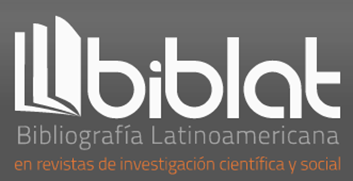Evaluación preliminar del efecto antimicrobiano y toxicidad aguda del extracto etanólico bruto de Luehea divaricata (Ka’a ovetĩ)
DOI:
https://doi.org/10.47133/IEUNA2028Palabras clave:
Daphnia magna, antibacteriano, antifúngico, bioensayo, baja toxicidadResumen
El uso de plantas medicinales para el tratamiento y/o prevención de enfermedades es ampliamente difundido y utilizado hasta la actualidad en Paraguay. Luehea divaricata, conocida popularmente como Ka'a ovetĩ (en Paraguay), açoita-cavalo (en Brasil), Francisco Alvarez (en Argentina) ha sido utilizada para tratar afecciones de piel, diarreas, como antiséptico, expectorante, antirreumático antitusígeno, antiasmático, antidiabético, carminativo entre otros. Considerando que muchas de esas plantas utilizadas de forma empírica, así como L. divaricata, no tienen sus efectos farmacológicos y tóxicos comprobados, el objetivo de este trabajo fue determinar el efecto antimicrobiano y toxicidad aguda preliminar del extracto etanólico bruto (EEB) de las partes aéreas de Luehea divaricata colectado en Paraguay. Para evaluar el efecto antimicrobiano se utilizó la técnica de disco-difusión frente à Escherichia coli (ATCC 8739), Salmonella typhymurium (ATCC 14028) y Candida albicans (ATCC 10231). Para evaluar la toxicidad aguda se utilizó neonatos de Daphnia magna Strauss, que fueron expuestos a seis concentraciones entre 1 y 1.000 mg.L-1 del extracto etanólico de Luehea divaricata y después de 48 horas se determinó la concentración letal 50 % (CL50). El EEB de L. divaricata presentó efecto inhibitorio en C. albicans y S. typhimurium, sin embargo, nula actividad frente a Escherichia coli. La CL50 del extracto en estudio fue superior a 1.000 mg.L-1. Siendo así se considera que el EEB de las partes aéreas de L. divaricata presenta potencial antimicrobiano y baja toxicidad, y puede ser objeto de más estudios acerca de sus efectos biológicos.
Descargas
Referencias
Almeida Alves, T. M. de, Fonseca Silva, A., Brandão, M., Mesquita Grandi, T. S., Smânia, E. D. F. A., Smânia, A., & Zani, C. L. (2000). Biological Screening of Brazilian Medicinal Plants. Memorias Do Instituto Oswaldo Cruz, 95(3), 367–373. https://doi.org/10.1590/s0074-02762000000300012.
American Public Health Association [APHA]. (1998). Standard Methods for the Examination of Water and Wastewater. 20th edition.
Aoki M., K., Encarnación-Dimayuga, R. y Cortés A. A. R., . (2005). Evaluación toxicológica de productos naturales usando microtécnicas. Revista Mexicana de Ciencias Farmacéuticas, 36(1), 11–17.
Bortoluzzi, R. C., Walker, C. I. B. & Manfron, M. P. (2002). Análise química qualitativa e morfo-histológica de Luehea divaricata Mart. In XVIII Simpósio de Plantas Medicinais do Brasil.
Calixto-Júnior, J. T., Morais, S. M. de, Colares, A. V. & Coutinho, H. D. M. (2016). The Genus Luehea (Malvaceae-Tiliaceae): Review about Chemical and Pharmacological Aspects. Journal of Pharmaceutics, 2016(2), 1–9. https://doi.org/10.1155/2016/1368971.
Clinical Laboratory Standards Institute [CLSI]. (2008). Padronização dos Testes de Sensibilidade a Antimicrobianos por Disco-difusão: Norma Aprovada – Oitava Edição. Agencia Nacional de Vigilancia Sanitaria [ANVISA]. OMS. M2-A8, 23 (1), 1–58.
Coelho de Souza, G., Haas, A. P. S., Von-Poser, G. L., Schapoval, E. E. S. & Elisabetsky, E. (2004). Ethnopharmacological studies of antimicrobial remedies in the south of Brazil. Journal of Ethnopharmacology, 90(1), 135–143.
Degen, R., Soria, N., Ortiz, M. y Basualdo, I. (2005). Problemática de nombres comunes de plantas medicinales comercializadas en Paraguay Medicinal plants marketed in Paraguay?: Problematic of folk names. Dominguezia, 21(1), 11–16.
Felício, L. P., Silva, E. M., Ribeiro, V., Miranda, C. T., & Vieira, I. L. B. F. (2011). Mutagenic potential and modulatory effects of the medicinal plant Luehea divaricata (Malvaceae) in somatic cells of Drosophila melanogaster: SMART / wing. Genetics and Molecular Research, 10(1), 16–24. https://doi.org/10.4238/vol10-1gmr982.
Fogel, R., Céspedes, C., López, L. & Valdez, S. (2016). Propiedades medicinales de plantas. Conocimiento tradicional y patentes.CONACyT.
Guilhermino, L., Diamantino, T., Carolina Silva, M. & Soares, A. M. V. M. (2000). Acute Toxicity Test with Daphnia magna: An Alternative to Mammals in the Prescreening of Chemical Toxicity? Ecotoxicology and Environmental Safety, 46(3), 357–362. https://doi.org/10.1006/eesa.2000.1916.
Instituto de Botánica Darwinion (2020). Flora del conosur: Catálogo de las plantas vasculares. IBODA, CONICET. http://www.darwin.edu.ar/Proyectos/FloraArgentina/DetalleEspecie.asp?forma=&variedad=&subespecie=&especie=divaricata&genero=Luehea&espcod=25095.
Internacional Organization for Standardization. (1996). ISO 6341. Calidad del agua. Determinación de la inhibición de la movilidad de Daphnia magna Straus (Cladocera, Crustacea) Ensayo de toxicidad aguda. Norma Europea. Versión Española. Comité Europeo de Normalización. (CEN).
Lima, E. O., Gompertz, O. F., Giesbrecht, A. M. & Paulo, M. Q. (1993). Im vitro antifungal activity of essential oils obtained from officinal plants against dermatophytes. Mycoses, 36, 333–336.
MAG-DIA/FAO. (2008). Informe nacional sobre el estado de los recursos fitogenéticos para la agricultura y la alimentación - Paraguay. Organización de las Naciones Unidas para la Alimentación y la Agricultura. Ministerio de Agricultura y Ganadería. Dirección de Investigación Agraria. 104 p. http://www.fao.org/3/i1500e/Paraguay.pdf.
Martínez, S., Vela, A., Botero, A., Arandia, F. y Mollinedo, P. (2010). Nuevo Micro-Bioensayo de Ecobtoxicidad de Extractos Acuosos de Plantas Medicinales sobre Daphnia magna sp. Revista Boliviana de Química, 27(1), 29–32. http://www.revistasbolivianas.org.bo/scielo.php?script=sci_isoref&pid=S0250-54602010000100005&lng=es.
Mendes, J. M., Sarmento Guerra, F. Q., Oliveira Pereira, F. de, Pereira de Sousa, J., Nogueira Trajano, V., & Oliveira Lima, E. de. (2012). Actividad antifúngica del aceite esencial de Eugenia caryophyllata sobre cepas de Candida tropicalis de aislados clínicos. Boletín Latinoamericano y del Caribe de Plantas Medicinales y Aromáticas, 11(3), 208–217. http://www.indi.usach.cl/ojs/index.php/blacpma/article/view/621.
Montovani, P., Júnior, A. Moraes, A. J. D., Fiorentini, F. é Meiners, C. C. (2009). Atividade Antimicrobiana Do Extrato de Açoita-cavalo (Luehea sp.). Revista Brasileira de Agroecologia, 4(2), 3731–3735.
Müller, J. D. E. B. (2006). Avaliação das atividades antimicrobiana, antioxidante e antinociceptiva das folhas da. UFSM, Santa Maria, Brazil.
Noelli, F. S. (1998). Múltiplos usos de espécies vegetais pela farmacologia Guarani através de informações históricas. Diálogos, 02, 177–199.https://doi.org/10.4025/dialogos.v2i1.328
https://doi.org/10.4025/dialogos.v2i1.328.
Pin, A., González, G., Marín, G., Céspedes, G., Cretton, S., Christen, P. y Roguet, D. (2009). Plantas medicinales del Jardín Botánico de Asunción. Proyecto etnobotánica paraguaya. 441 p.
Secretaría de Economía. (2010). NMX-AA-087-SCFI-2010. Norma Mexicana de Análisis de Agua y Evaluación de Toxicidad Aguda con Daphnia magna. Straus (Cladocera, Crustacea). (p. 39). Secretaría de Economía Estado Unidos de México.
Segovia, E. A., Arrúa, R. A., Barrozo, N. C., Duré, R. D., Nakayama, H. D. & Peralta, I. (2016). Evaluación de los efectos mutagénicos/antimutagénicos de Luehea divaricata en ratones. Memorias Del Instituto de Investigaciones En Ciencias de La Salud, 14(3), 102–106. https://doi.org/10.18004/mem.iics/1812-9528/2016.014(03)102-106.
Segovia-Corrales, E. A. L., Nakayama, H. D., Duré, R. D. & Ibarra, P. A. (2017). Estudios del potencial tóxico in vivo de Luehea divaricata (Ka´á Ovetî O Ka´á Ovetî Pytâ). Investigaciones y Estudios de La UNA, 10(1), 95–101.
Tanaka, J. C. A., Silva, C. C. da, Dias Filho, B. P., Nakamura, C. V., Carvalho, J. E. de & Foglio, M. A. (2005). Constituintes químicos de Luehea divaricata Mart. (Tiliaceae). Química Nova, 28(5), 834–837. https://doi.org/10.1590/s0100-40422005000500020.
United States Environmental Protection Agency [EPA]. (2002). OCSPP 850.1010. Ecological Effects Test Guidelines: Aquatic Invertebrate Acute Toxicity Test, Freshwater Daphnids. United States Enviromental Protection Agency, Office of Chemical Safety and Pollution Prevention (7101).
Vargas, V. M., Guidobono, R. R. & Henriques, J. A. (1991). Genotoxicity of plant extracts. Memórias Do Instituto Oswaldo Cruz, 86 (2), 67–70. 10.1590/s0074-02761991000600017.
Xu, R. R., Pei, Z. T., Wang, W. Q., Zhang, M., Zhang, L. L., Zhang, J., Wang, W. Q., Sun, L. W. & Zhang, Y. M. (2020). Assessment of biological toxicity and ecological safety for urban black-odor river remediation. International Journal of Environmental Research and Public Health, 17(3). https://doi.org/10.3390/ijerph17031025.
Zacchino, S., Santecchia, C., López, S., Gattuso, S., Muñoz, J. de D., Cruañes, A., Vivot, E., Cruañes, M. del C., Salinas, A., Ruiz, R. E. de & Ruiz, S. (1998). In vitro antifungal evaluation and studies on mode of action of eight selected species from the Argentine flora. Phytomedicine, 5(5), 389–395. https://doi.org/10.1016/S0944-7113(98)80022-6.



















